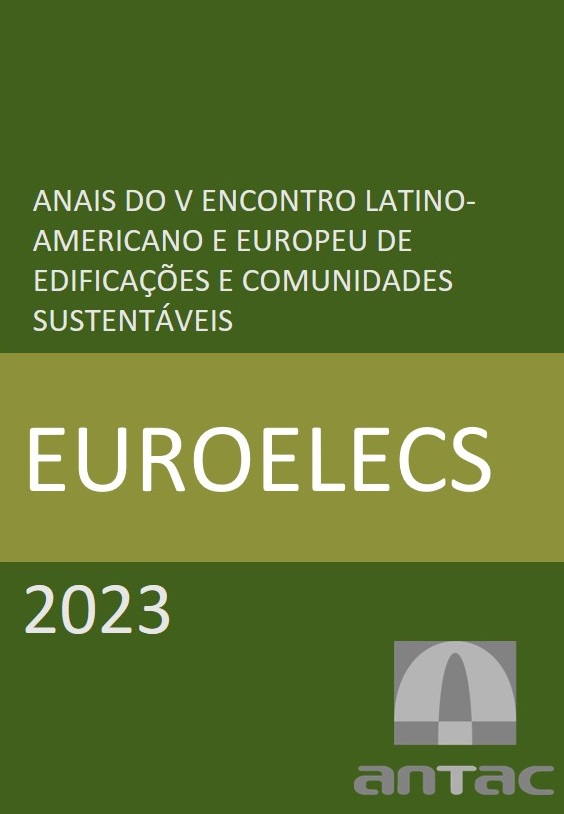Desafios do uso do BIM em obras públicas de grande porte: um estudo de caso de uma Unidade de Pronto Atendimento (UPA)
Palavras-chave:
Bim, Obras públicas, Modelagem da informação da construção, InteroperabilidadeResumo
A tecnologia BIM se apresenta vantajosa em diversos aspectos para o setor da construção civil, principalmente pela possibilidade de visualização e alteração simultânea, inclusive por diversas disciplinas, através da interoperabilidade entre softwares BIM. No Brasil, segundo a Lei nº 14.133 de 2021, as obras públicas a serem licitadas estabelecem que os projetos sejam elaborados preferencialmente usando BIM, a fim de maior rigor e controle sobre os processos construtivos envolvidos. Embora o uso da tecnologia esteja sendo empregada conforme a legislação, ainda há etapas incipientes no que diz respeito ao uso integrado do BIM entre as disciplinas que compõem o projeto e sua compatibilização, o que acarreta em fluxo de trabalho desordenado e perda de produtividade, dificultando processos na fase de projeto. Dessa forma, este trabalho busca analisar o projeto de reforma e ampliação em uma Unidade de Pronto Atendimento (UPA), obra de grande porte licitada na qual foi empregada a metodologia BIM. A metodologia baseia-se em um estudo de caso do anteprojeto e projeto executivo desenvolvido pelos autores no ano de 2022, através de terceirização da modelagem por um escritório de engenharia. Através da análise, após o fim do processo projetual, foi possível constatar dificuldades de coordenação de disciplinas, compatibilização de projetos complementares e dificuldades no fluxo de trabalho, causados pela ausência de protocolos e de um Plano de Execução BIM. Dessa forma, o processo de projeto se tornou oneroso tanto em questões de custo, quanto de prazo. Apesar das dificuldades, o uso do BIM foi importante para garantir processos mais eficientes durante o desenvolvimento do projeto. Assim, este trabalho busca discutir as principais dificuldades encontradas pelos autores, a fim de contribuir para melhores práticas de projeto e uso do BIM para a modelagem e compatibilização de obras de grande porte, bem como sua importância para projetos mais eficientes.
Referências
Agência Brasileira de Desenvolvimento Industrial (2018). Coletânea guias BIM ABDI-MDIC - Guia 01: processo de projeto BIM. (Coletânea GUIAS BIM ABDI-MDIC). Disponível em: https://api.abdi.com.br/file-manager/upload/files/Guia_BIM01.pdf.
Brasil (2021). Lei nº 14133, de 1 de abril de 2021. Lei de Licitações e Contratos Administrativos. Disponível em: https://planalto.gov.br/ccivil_03/_Ato2019-2022/2021/Lei/L14133.htm.
Brasil (2018). Decreto nº 9377, de 17 de maio de 2018. Institui a Estratégia Nacional de Disseminação do Building Information Modelling. Disponível em: https://www.planalto.gov.br/ccivil_03/_ato2015-2018/2018/decreto/d9377.htm.
Biblus (2022). What are LOD and LOIN in BIM and what are they for? Disponível em: https://biblus.accasoftware.com/en/what-are-lod-and-loin-in-bim-and-what-are-they-for/.
Buildingsmart International (c2023). Industry Foundation Classes (IFC). Disponível em: https://technical.buildingsmart.org/standards/ifc/.
Câmara Brasileira da Indústria da Construção (2016). Fundamentos BIM - Parte 1: implementação do BIM para construtoras e incorporadoras. Brasília: CBIC. 5 v.
Gartoumi, K. I.; Zaki, S.; Aboussaleh, M. (2023). Building information modelling (BIM) interoperability for architecture and engineering (AE) of the structural project: a case study. Materials Today: Proceedings, p. 1-8. Disponível em: https://doi.org/10.1016/j.matpr.2023.05.408.
Lean Construction Institute (c2023). An Introduction to Lean Construction. Disponível em: https://leanconstruction.org/lean-topics/lean-construction/.
Ministério da Indústria, Comércio Exterior e Serviços (2018). Estratégia BIM BR: estratégia nacional de disseminação do Building Information Modelling - BIM. MDIC. Disponível em: https://www.gov.br/produtividade-e-comercio-exterior/pt-br/images/REPOSITORIO/sdci/CGMO/26-11-2018-estrategia-BIM-BR-2.pdf.
Porwal, A.; Hewage, K. N. (2013). Building Information Modeling (BIM) partnering framework for public construction projects. Automation In Construction, p. 204-214. Disponível em: http://dx.doi.org/10.1016/j.autcon.2012.12.004.
Viana, V. L. B.; Carvalho, M. T. M. (2021). Prioritization of risks related to BIM implementation in brazilian public agencies using fuzzy logic. Journal Of Building Engineering, p. 102104. Disponível em: https://doi.org/10.1016/j.jobe.2020.102104.
Sampaio, A. Z. (2022). Project management in office: BIM implementation. Procedia Computer Science, p. 840-847. Disponível em: http://dx.doi.org/10.1016/j.procs.2021.12.083.
Sienge (2022). Mapeamento Maturidade BIM no Brasil. Sienge, 27 p. Disponível em: https://siengeprod.wpenginepowered.com/wp-content/uploads/2022/09/maturidade-bim-no-brasil-2022.pdf.

